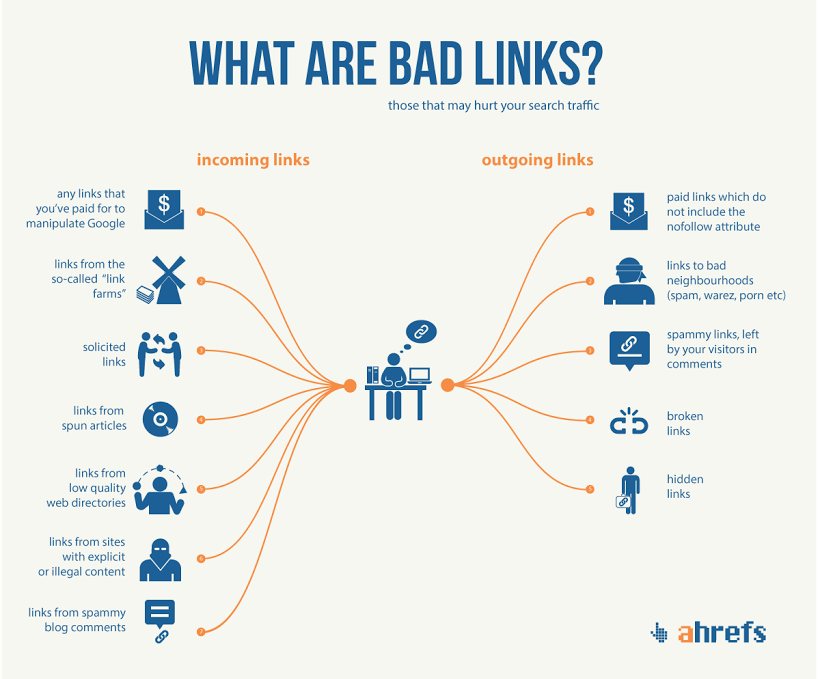Equally important to developing quality back links is identifying those links that will earn you penalties in SEO.
Penalties?
Yes, penalties. Search engines – like Google – can and often do penal ize websites with links that appear unnatural. This can affect your brand visibility and interrupt trafficking to your website as well.
ize websites with links that appear unnatural. This can affect your brand visibility and interrupt trafficking to your website as well.
So how can you make sure that ‘bad links’ will not harm your website?
Check the credibility of your backlink. It’s very important to build links from credible sources. If you instead build links from ill-reputed sources, search engines will consider your website spam and diminish your ranking. However, you can discern the credibility by researching the source. Its age, its reputation, even its own backlinks. Then you will be in a better position to determine if you want to achieve inbound links with those websites.
Assess appropriate link context. Generating links within the context of your website is important to building SEO. A Sephora link on a Home Depot site is not contextually appropriate, though it maybe a credible source link. For this reason, it’s important to link to websites that promote similar products, services, or ideas as you. If not, Google’s algorithms will detect this discrepancy and flag your website as inappropriate as a result.
Avoid link schemes. There are plenty of ‘link schemes’ on the market claiming to improve your search ranking, such as ‘link wheels’ and ‘link exchanges.’ Any such scheme is a dangerous alternative to authentically building your links because they violate Google’s standards – and this will likely result in a diminished search ranking as well. So avoiding these schemes is crucial to your SEO success in the long run.
Here it is! Three ways to identify ‘bad links’. It’s crucially important to add these steps into your inbound-link strategy; if not, you are missing out on an opportunity to optimize your web traffic. Because in reality, knowing what is harmful to your site is just as important as knowing what is not. And in this ever-changing sphere of digital marketing, you can’t afford to not understand the difference.


